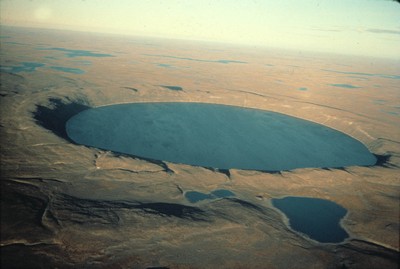The study of Canadian extraterrestrial impact structures began in the 1950s under the leadership of C.S. Beals at the Dominion Observatory, and some 31 Canadian impact structures are now documented. The oldest and largest is Sudbury, Ontario, at 200-250 kilometres in diameter and 1.85 billion years old. The youngest and smallest is Whitecourt, Alberta, at less than 40 metres and 1100 years old. Following the merger with the Earth Physics Branch in 1986, the Geological Survey of Canada became responsible for these studies.
From the outset, studies of Canadian impact structures were multidisciplinary, often involving collaboration with other scientific institutions. They have produced a number of firsts, including the dating of terrestrial impact events by isotopic analyses and the documentation of the rate at which the shock wave generated on impact attenuates in the target rocks.
The study of Canadian impact structures has made significant contributions to understanding the processes involved in their formation. Today, the research is carried out by Canadian universities, and much of the focus is on understanding the evolution of the Sudbury impact structure and its world-class copper-nickel-platinum group element ores, which, so far, have produced a cumulative total of over $ 300 billion worth of metals.
Category: Science Advances
Decade: 1950s
Reference
Grieve, R.A.F., 2006. Impact Structures in Canada; Geological Association of Canada, GEO text 5, St.John’s.


